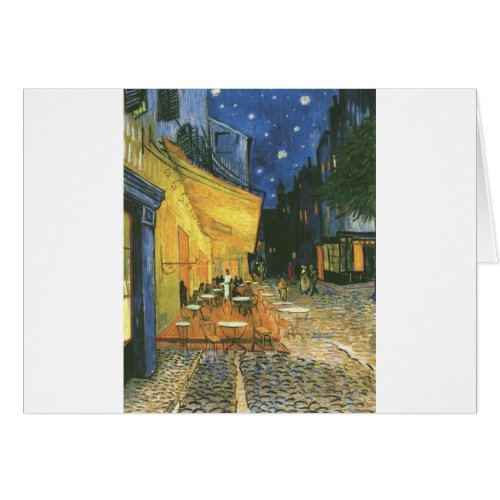Cafe Terrace - Vincent van Gogh



The truth is that van Gogh's constant study results merely in confirming and not creating his instinct for color. Perhaps in his early time, the force of this instinct could not be understood by even the people most in sympathy with him, perhaps not even by himself. But in view of the triumphs of his later painting, there must be no mistake about the born colorist who is before us in that first masterpiece, The Potato Eaters. Painted at Nuenen after repeated studies of detail, many of which still exist, its limited range of color succeeds in rendering not alone the full solidity of objects under the light of the lamp and amid the atmosphere of the room: it already gives a deep account of that sense of the beauty of color for which the artist's work with the clearer and more varied palette of his maturity will furnish testimony that is more arresting and indeed stronger, but not really different. Other works of the Dutch period, ones with a wider range of color, even if containing less of the dramatic appeal of The Potato Eaters, offer still surer proof that the quality of his painting is native with him, and not acquired. Two scraps of conversation come to my mind at this point. Having once rather thoughtlessly spoken of the artist as belonging in part to the French school, I was met by a simple but pithy comment from his nephew, Vincent W. van Gogh, "So? Well, I think he is always Dutch." And then I recall what Matisse said when, after the settling of his father's estate, he came once more into possession of his first picture, which he had not seen for some thirty years. It had been done in a provincial town, without instruction, and without so much as awareness that a "modern" school existed. Yet on seeing it he told me that his first feeling was one of profound discouragement, that it seemed as if he had made no progress whatever. He had done so, to be sure, and van Gogh made progress-at a fantastic speed; but it is essential to realize that the real artist builds on a character, a vision, that is his from the first. If there is difficulty in doing so in the presence of van Gogh's color, with its metamorphosis from darkness to light, the oneness of his art is easy to grasp when we consider it from the standpoint of form. In this respect, Vincent changes but little, save in the matter of skill, a thing that naturally comes with incessant practice. From the first work we know to the last, his drawing is directed to the rendering of character and expression. His study of modelling is pursued with the vision of the realist who wants his work to give the effect of nature with a maximum of conviction. And even such detractors as he may still find today will admit that he does impose this conviction, that he carries out the idea he got from Millet and copied out for Theo in a letter: "I had rather say nothing than express myself weakly."


